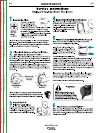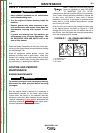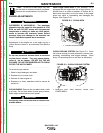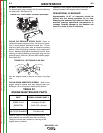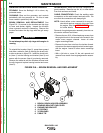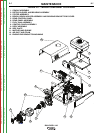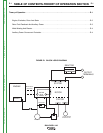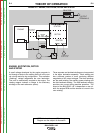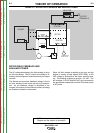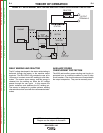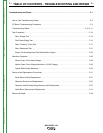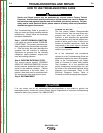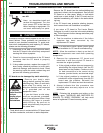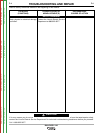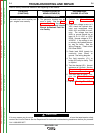
THEORY OF OPERATION
E-2 E-2
BULLDOG® 140
ENGINE, EXCITATION, ROTOR
AND STATOR
A small voltage developed by the engine magneto is
fed through a diode to the rotating field coil in the rotor
via a brush and slip ring configuration. This excitation
(“flashing”) voltage mag ne tizes the rotor lamination.
The rotor is mechanically coupled to the engine. The
rotating magnet induces a voltage in the stationary
windings of the main alternator (stator).
FIGURE E.2 - ENGINE, EXCITATION, ROTOR AND STATOR
Three separate and isolated windings are incor porated
in the stator lamination assembly. Each winding set
has a different number of turns, producing different
magnitudes of AC output voltages. The three windings
are the weld winding, the auxiliary power winding and
the field feedback winding. The field feedback winding
provides rotor current during machine operation. The
output of the BULLDOG 140 is dependent on two cri-
teria: the engine RPM and the amount of current in the
rotor winding.
ENGINE
STATOR
STATOR
ROTOR
REACTOR
BRIDGE
CAPACITOR
RHEOSTAT
115 AND 230VAC
RECEPTACLES
OUTPUT
TERMINALS
ROTATION
MECHANICAL
SLIP
RINGS
ROTOR
MAGNETO
NOTE: Unshaded areas of Block Logic
Diagram are the subject of discussion
Return to Section TOC Return to Section TOC Return to Section TOC Return to Section TOC
Return to Master TOC Return to Master TOC Return to Master TOC Return to Master TOC



